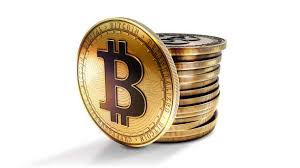The forex market, often referred to as the foreign exchange market, has witnessed a remarkable transformation in recent years, adapting to the digital age and emerging as a dynamic and accessible trading platform. In this article, we’ll explore the evolution of forex trading and its journey into the digital era.
From Physical Exchanges to Electronic Trading
Traditionally, forex market was conducted through physical exchanges in major financial centers like New York, London, and Tokyo. Traders interacted on trading floors, and transactions occurred through verbal agreements. This setup limited access primarily to institutional investors and large corporations.
The Digital Revolution
The digital revolution changed the landscape of forex trading in several ways:
Online Trading Platforms: The advent of online trading platforms allowed retail traders to access the forex market through the internet. These platforms provide real-time price quotes, charting tools, and execution capabilities.
24/5 Accessibility: Unlike traditional exchanges with set trading hours, the forex market operates 24 hours a day, five days a week. Online trading platforms enable traders to participate from anywhere in the world at any time.
Leverage and Margin: Online brokers introduced the concept of leverage, allowing traders to control larger positions with a smaller amount of capital. While leverage magnifies profits, it also increases risk, making risk management essential.
Educational Resources: Online brokers and trading platforms offer extensive educational resources, including webinars, tutorials, and market analysis, empowering traders with knowledge and insights.
Mobile Trading
The rise of mobile technology has taken forex trading a step further. Mobile trading apps enable traders to access the market from their smartphones and tablets, allowing for greater flexibility and convenience. Traders can monitor their positions, receive real-time updates, and execute trades on the go.
Algorithmic Trading
Algorithmic trading, or automated trading, has gained popularity in the digital age. Traders and institutions use computer algorithms to execute trades based on predefined criteria. These algorithms can analyze market data at a speed impossible for humans, enabling high-frequency trading and advanced strategies.
The Future of Forex Trading
As the digital age continues to unfold, the forex market is poised for further evolution. Here are some trends to watch for:
Artificial Intelligence: AI and machine learning are being integrated into trading strategies. These technologies can analyze vast amounts of data and improve decision-making.
Cryptocurrency Integration: Some online brokers are expanding their offerings to include cryptocurrency trading, providing traders with exposure to digital assets.
Regulatory Frameworks: The forex market may see increased regulation as authorities aim to enhance transparency and protect retail traders.
In conclusion, the digital age has ushered in a new era of accessibility and innovation in the forex market. From online trading platforms to mobile apps and algorithmic trading, traders have more tools and resources at their disposal than ever before. As the market continues to evolve, traders must adapt to new technologies and stay informed to remain competitive in this dynamic landscape.




